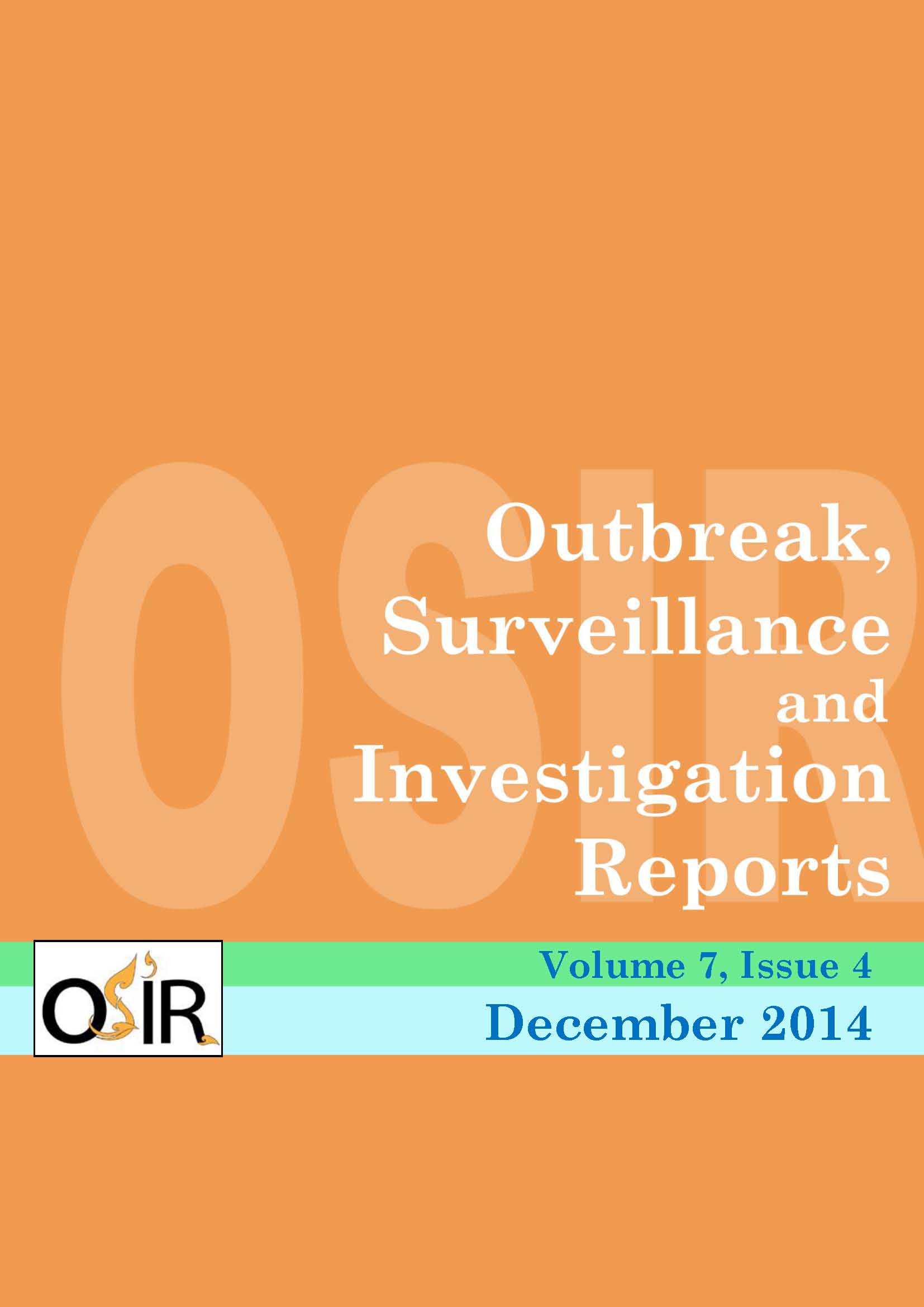An Outbreak of Leptospirosis in Davao City of Philippines, 2013: An Investigation of the Risky Behaviors that Led to the Resurgence
DOI:
https://doi.org/10.59096/osir.v7i4.263282Keywords:
leptospirosis, case-control, risk factors, flooding, PhilippinesAbstract
On 7 Feb 2013, the National Epidemiology Center in the Philippines Department of Health received a report on increasing number of leptospirosis cases in Davao City after the monsoon flooding. Leptospirosis has been endemic in Davao City and a leptospirosis outbreak occurred in 2011 after a flashflood in the city. Objectives of our investigation were to determine existence of the outbreak, identify source and mode of transmission, and find out risk factors. We reviewed medical records of local hospitals and conducted active case finding in the affected communities. A suspect leptospirosis case was a resident in one of nine flooded districts of Davao City who had fever for two days or more and any of the following: myalgia, conjunctival suffusion, jaundice, anuria/oliguria, hematuria or calf pain from 6 Jan to 15 Feb 2013. Serum samples were collected for laboratory confirmation by microscopic agglutination test and polymerase chain reaction. Key informants were also interviewed. Total 64 suspect leptospirosis cases with six deaths (CFR = 9.4%) were identified. Ages ranged from 14-73 years (median = 33 years), with 86% as males. Among 42 cases, 64% were positive for leptospira spp. Majority of the cases (82%) waded in the flood without any post-exposure prophylaxis and 63% had open wounds on lower extremities when exposed to floodwater. The most affected age group was 21-30 years old (33%). The case-control study showed that wading in floodwater (OR = 11, 95% CI = 1.45-458.37), swimming in floodwater (OR = 3, 95% CI = 1.31-8.00), having contact with moist soil (OR = 3, 95% CI = 1.13-6.49) and having open wounds (OR = 11, 95% CI = 3.61-36.63) were risk factors. Therefore, it was confirmed that there was a resurgence of leptospirosis in Davao City. Intensive health education activities, emphasizing protective clothing and prophylactic treatment might reduce risk for leptospirosis and future outbreaks.
References
World Health Organization. Human leptospirosis: guidance for diagnosis, surveillance and control. Geneva: World Health Organization; 2003.
Heymann DL, editor. Control of communicable diseases manual. 19th ed. Washington DC: American Public Health Association; 2008.
Levett PN. Leptospirosis. Clin Microbiol Rev. 2001 Apr;14(2):296-326 [cited 2014 Mar 5]. <http://cmr.asm.org/content/14/2/296.full>
Yanagihara Y, Villanueva SY, Yoshida S, Okamoto Y, Masuzawa T. Current status of leptospirosis in Japan and Philippines. Comp Immunol Microbiol Infect Dis. 2007 Sep;30(5-6):399-413. Epub 2007 Jul 5.
Public Health Resources. Leptospirosis in the Philippines, DOH. 2014 July 5 [cited 2014 Mar 5]. <http://publichealthresources.blogspot.com/2014/07/leptospirosis-in-phjlippines-doh.html>
Victoriano AF, Smythe LD, Gloriani-Barzaga N, Cavinta LL, Kasai T, Limpakarnjanarat K, et al. Leptospirosis in the Asia Pacific region. BMC Infect Dis. 2009 Sep 4;9:147.
Centers for Disease Control and Prevention. Epi Info. [cited 2014 Mar 8]. <http://wwwn.cdc.gov/epiinfo/html/prevVersion.htm>
Mendoza MT, Roxas EA, Ginete JK, Alejandria MM, Roman AD, Leyritana KT, et al. Clinical profile of patients diagnosed with leptospirosis after a typhoon: a multicenter study. Southeast Asian J Trop Med Public Health. 2013 Nov;44(6):1021-35.
Downloads
Published
How to Cite
Issue
Section
License
Copyright (c) 2023 Outbreak, Surveillance, Investigation & Response (OSIR) Journal

This work is licensed under a Creative Commons Attribution-NonCommercial-NoDerivatives 4.0 International License.









